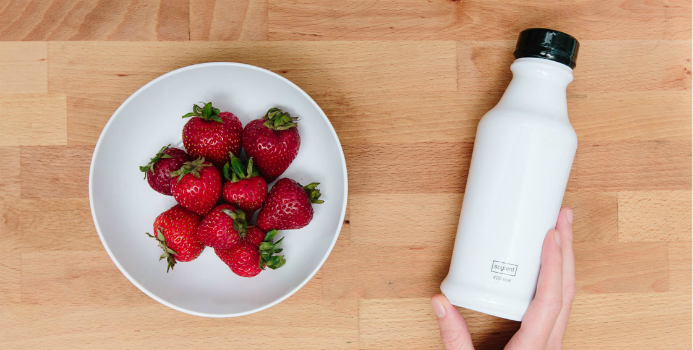As a single man, the mere idea of preparing three solid, nutritious meals a day is daunting, to say the least. My usual meals consist of frozen meat vacuum-packed beneath a thin layer of cellophane that can be taken out and heated up in a matter of minutes. Special occasions weren’t greeted with pan-seared sea bass and roasted asparagus, but rather a greasy meal from some diner on the outskirts of town.
Lately, I’ve been seeing a lot of chatter about Soylent, which is advertised as, “a nutritionally complete, ready-to-drink, meal in a bottle.” Having spent my fair share of time in the gym, initially, I passed this product off as just another expensive, chalky-tasting protein shake. However, after a friend of mine incorporated the beverage into his daily routine, my eyes were quickly opened to the convenience and benefits of Soylent.
So what exactly is Soylent?
I’ll admit, the name doesn’t sound very appealing at all. According to Soylent’s chief executive, Rob Rhinehart, the name originated from the 60’s Sci-Fi novel “Make Room! Make Room!” The novel ultimately depicts how an overwhelming growth in population will impact the overall availability of food and other resources. The primary food source in the novel was Soylent, a mixture of soy and lentils.
The Soylent of today is available in two forms—a drink (Soylent 2.0) and a powder (Soylent Powder 1.5)—both of which contain no lentils, but the drink does features a new soy protein isolate. Regardless of form, Soylent is designed to eliminate the monogamous chore of meal preparation while still offering a complete nutritional profile.
What are the benefits?
For some, the idea of never having to cook a meal is enough of a reason to give Soylent a try. There is a wealth of other benefits though:
Nutrition:
Soylent has quickly built a positive reputation simply by being a nutritional powerhouse. The Soylent powder, for example, contains a whopping 500 calories per serving. Those calories are split proportionately to meet Federal Dietary Guidelines. In other words, approximately 45% of those calories come from carbohydrates. The other half consists of lipids (40%) and protein (15%).
Soylent 2.0, which is the liquid version, features a slightly different nutritional profile. Each serving of Soylent 2.0 contains 400 calories split between carbs (33%), lipids (47%), and protein (20%).
Eco-Friendly:
Believe it or not, consuming Soylent can help the environment. By incorporating Soylent into your diet, you’re essentially replacing meals. Those meals would normally be prepackaged inside an unnecessary plastic housing that will inevitably end up in the trash. Therefore, as you decrease the number of prepared meals you consume, the amount of waste you create declines as a result.
Furthermore, Soylent 2.0 arrives in a recyclable bottle and is designed to have a low impact on the environment.
Convenience:
As stated previously, Soylent’s products are designed to eliminate the need for meal preparation. First and foremost, that means you do not have to go through the arduous task of prepping and cooking an entire meal, which has a lot of indirect benefits as a result. It means you don’t have to plan meals, buy ingredients, or wash a sink full of dishes.
Lifestyle-Friendly:
While this doesn’t apply to everyone, it is good to know that Soylent is conscientious of all lifestyles. The new versions of Soylent Powder 1.5 and Soylent 2.0 are completely free of lactose, nuts, and animal byproducts. For those of you who might not know:
- A vegan is someone who does not use animal-based food or products.
- Lactose is a sugar found in dairy products. A lot of people suffer from lactose intolerance, which is the inability to digest lactose.



